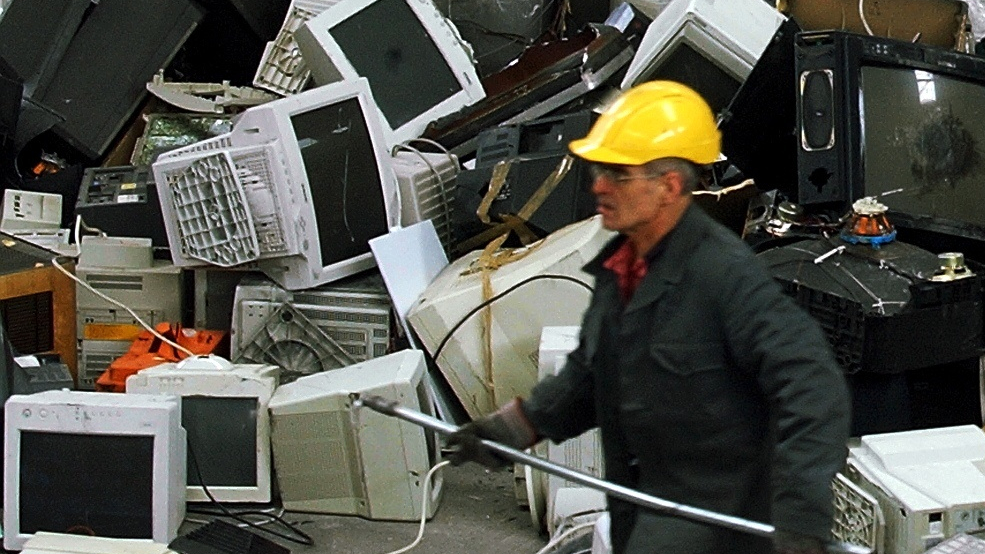More than one-tenth of the materials used in the EU comes from recycled and recovered sources, according to new figures.
In a recent report, Eurostat said the bloc had a 'circularity rate' of 11.7 percent in 2016.
The circularity rate is the amount of waste that has been recovered or recycled and then fed back in to be used again as a proportion of all the materials used in the economy.

A higher circularity rate means that less is going to waste (Credit: VCG)
A higher circularity rate means that less is going to waste (Credit: VCG)
It is much lower than other rates such as recycling, which is around 55 percent in the EU, because it takes into account all the materials going in and out rather than just waste.
A higher circularity rate means that less is going to waste and less primary materials are being extracted. A key element of a successful 'circular economy' – the idea of reducing waste and using materials for as long as possible.
Recycling is when waste is kept for its main use and reused, this includes plastic being melted down. Whereas recovery is when waste is processed for other uses, after all the reusable parts have been taken out. This is common with mobile phones and computers.
There is a 3.4 percent increase in the circularity rate in the EU as a whole against previous data collected from 2004. However it still means that almost 90 percent of goods consumed in the EU are produced using newly harvested raw materials. While some of these could be from renewable sources, such as wood, others will be depleting a finite stock on Earth.
And while some materials will degrade quickly, some plastics can take hundreds of years to decompose.
Eurostat, the European Union's statistics office, says this increase is down to the EU consuming fewer raw materials such as fossil fuels, but it also says recycling rates are only increasing slightly.
The Waste and Resources Action Programme (WRAP) says the rate is important as it is "a strong indication of resources being used sustainably."
"We would of course hope that all countries are striving to continue this trend."
WRAP, which works with governments, businesses and communities to achieve a circular economy, say that the "appetite for sustainability is growing" in the UK.
The charity says it is also working with countries around the world to improve sustainability and further increase the rate.
"Increasing circularity requires a holistic approach looking at all parts of the supply chain as well as how materials are used and disposed of."
WRAP is working on a "Plastic Pact" program with UK businesses, which it hopes will create a circular economy for plastics by tackling waste.
What is the circularity rate like across the EU?
Of all the countries in the EU, the Netherlands has the highest rate of circulation, with 29 percent of all materials used coming from recycled and recovered sources.
This is predominantly due to a higher rate of recycling, 3.5 tons per person – which is more than twice the EU average (1.7 tons).
The Dutch also have a "material consumption rate," which is lower than the EU average.
Eurostat says it can be a combination of factors that lead to a better circularity rate, but that high recycling and low consumption are the key contributors.
Greece has the lowest circularity rate of 1.3 percent within the EU.
Despite the country having a material consumption rate similar to the EU average, it has the lowest rate of recycling in the EU (0.2 tons per capita) leading to its low score.
Eurostat says differences in rates between countries is not just down to how much is being recycled, but also how much is imported and extracted from natural resources.
Data for waste, international trade in goods and economy-wide material flow accounts are used for these findings. All EU member states are obliged to record these statistics.